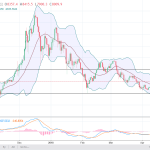Official recession calls are the responsibility of the NBER Business Cycle Dating Committee, which is understandably vague about the specific indicators on which they base their decisions. This committee statement is about as close as they get to identifying their method.
There is, however, a general belief that there are four big indicators that the committee weighs heavily in their cycle identification process. They are:
The Latest Indicator Data
According to the Federal Reserve:
Industrial production decreased 0.2 percent in September after edging down 0.1 percent in August. The decline in August is smaller than previously reported. In September, manufacturing output moved down 0.1 percent for a second consecutive monthly decrease; the index for mining fell 2.0 percent, while the index for utilities rose 1.3 percent. For the third quarter as a whole, total industrial production rose at an annual rate of 1.8 percent, and manufacturing output increased 2.5 percent. A strong gain for motor vehicles and parts contributed substantially to the quarterly increases. At 107.1 percent of its 2012 average, total industrial production in September was 0.4 percent above its year-earlier level. Capacity utilization for the industrial sector fell 0.3 percentage point in September to 77.5 percent, a rate that is 2.6 percentage points below its long-run (1972–2014) average.
The full report is available here.
Today’s report on Industrial Production for September shows a month-over-month decline of -0.2 percent (-0.19 percent to two decimal places), which matches the Investing.com consensus of a 0.2 percent decrease. This indicator has posted a monthly decline for eight of the last nine months and is up only 0.39% year-over-year. In fact, the year-over-year level is lower than at the start of nine of the ten recessions since 1950.
In some respects, Industrial Production is the least useful of the Big Four economic indicators. It’s a hodge-podge of underlying index components and subject to major revisions, which undercuts its value as a near-term indicator of economic health. As a long-term indicator, it needs two key adjustments to correlate with economic reality. First, it should be adjusted for inflation using some sort of deflator relevant to production. Second, it should be population-adjusted.
The chart below is another way to look at Industrial Production over the long haul. It uses the Producer Price Index for All Commodities as the deflator and Census Bureau’s mid-month population estimates to adjust for population growth. We’ve indexed the adjusted series so that 2012=100.













Leave A Comment